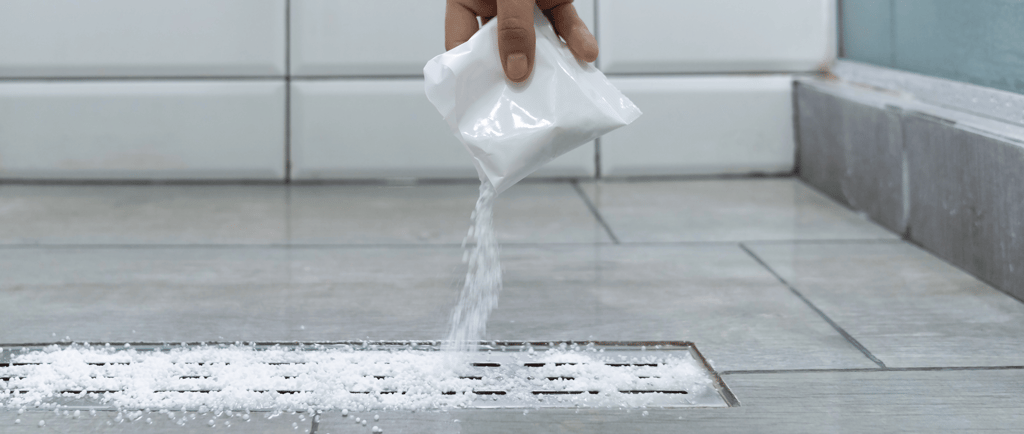DIY Drain Cleaning Hacks That Actually Work | SuperTech Industries
Tired of slow drains and clogs? Discover safe, cost-effective home remedies for clearing sink, tub, and shower blockages without harsh chemicals.
PLUMBINGHANDYMAN
3/19/20255 min read


What This Post Covers
Common causes of clogged drains and how to prevent them
Practical, chemical-free methods for clearing stoppages
Simple tips for regular drain maintenance
When to try DIY vs. when to call a professional
Overview of helpful tools and supplies
Support options from SuperTech Industries
Why Home Drains Clog
Understanding the root causes of blockages is the first step in fixing them. In many homes, a mixture of soap residue, cooking oils, and hair can build up over time, narrowing the pipe’s interior until water barely flows. In kitchen drains, food particles and grease harden on pipe walls, while bathroom drains often trap hair and grooming products. Over the years, these accumulations create stubborn clogs that store-bought chemical cleaners may only partially dissolve—or not touch at all.
Drain clogs don’t always come from everyday buildup, though. A child might flush small toys, or old pipes could corrode and collapse. In some cases, a main sewer line can develop a blockage from tree roots penetrating the pipe. While many minor clogs are DIY-friendly, complicated or recurring stoppages might require professional help. The best approach depends on the severity and underlying cause.
Essential DIY Cleaning Hacks
1. Boiling Water and Dish Soap
One of the simplest approaches involves almost no special tools: a pot of boiling water and a little dish soap.
How It Works: The heat softens grease or soap scum within the drain, while the soap dissolves and lubricates.
Steps:
Fill a kettle or large pot with water and bring it to a rolling boil.
Add a few drops of dish soap directly into the drain or the boiling water.
Slowly pour the water down the drain in intervals, allowing it to work for a few seconds between pours.
Best For: Partially clogged kitchen drains due to grease and soft debris.
2. Baking Soda and Vinegar
Natural and eco-friendly, this combination harnesses a chemical reaction that can help break apart gunk.
How It Works: Baking soda (a base) reacts with vinegar (an acid), producing fizzing that loosens mild obstructions.
Steps:
Sprinkle about half a cup of baking soda into the drain.
Pour in half a cup of white vinegar.
Immediately cover the drain with a plug or cloth to contain the foam.
Wait 15–20 minutes, then flush with hot water (or better yet, boiling water if pipes permit).
Best For: Mild clogs in bathroom sinks, bathtubs, or showers.
3. Manual Plunging
A tried-and-true tool for clearing more stubborn blockages—especially in toilets, tubs, or sinks.
Tips for Success:
Seal off alternative openings (like overflow holes in sinks) to maximize suction.
Use a sink plunger (flat bottom) for kitchen or bathroom sinks; a toilet plunger has a flange that fits the bowl opening.
Apply firm, steady strokes instead of aggressively slamming the plunger to prevent water from spraying everywhere.
Potential Limitations: If no improvement occurs after several plunging attempts, the blockage might be too deep or require a more robust method.
4. Hand Auger or Drain Snake
A simple cable tool with a crank handle can physically remove or break up clogs.
How It Works: By feeding the snake down the pipe, you latch onto or shred debris and pull it back out.
Usage Hints:
Gently feed the cable; forcing it can damage pipes or entangle the snake.
Slowly crank while applying forward pressure.
Rinse thoroughly afterward to remove debris.
Best For: Hair-filled bathroom drains or lodged debris in kitchen lines.
Preventive Measures to Keep Drains Clear
Use Drain Screens and Hair Catchers
Place a small mesh screen or strainer over shower drains, or use hair catcher inserts in bathroom sinks. These trap most hair or larger particles before they enter the pipes.Avoid Dumping Grease
Rather than pouring cooking oil or grease directly into the sink, collect it in a container and throw it in the trash. Fats can solidify and cling to pipe walls.Flush Drains Regularly
Every week or two, run very hot tap water down the drain for a minute or two, helping to dissolve minor residues. Some people sprinkle in a bit of baking soda first for extra cleaning power.Check Stoppers and P-Traps
Periodically remove and clean pop-up stoppers in sinks. Likewise, the P-trap under a sink can be removed if accessible, letting you manually scoop out sludge. Always place a bucket beneath to catch spills.
DIY vs. Professional Drain Service
While home-based methods prove effective for many slow drains, not every clog yields to plungers or homemade concoctions. Certain indicators may signal the need for expert intervention:
Recurring Clogs: If the same drain backs up repeatedly despite your best efforts, you could have a deeper partial blockage or root intrusion.
Multiple Drains Affected: Slow drainage in multiple fixtures, like toilets gurgling when you run the sink, can indicate a main line issue.
Sewer Odors: If you smell sewage around drains, or suspect a cracked sewer line, rely on professional assessment to locate and fix the leak.
Advanced Tools Needed: Hydro jetting or video camera inspections sometimes become necessary to reach distant or complex blockages.
Turning to a trusted service provider, such as SuperTech Industries, often saves significant time and frustration. Professionals not only clear the clog but also identify any potential pipe damage or code violations that might cause future problems.
Helpful Tools and Supplies for DIY Drain Care
Protective Gloves: Keep hands safe from debris and chemicals—natural or otherwise.
Plunger: A basic must-have. For households with multiple sinks or toilets, consider one for each area.
Drain Snake/Auger: Great for persistent blockages caused by hair or sludge.
Chemical-Free Cleaners: Baking soda, white vinegar, dish soap—simple, eco-friendly staples that tackle light clogs.
Bucket and Old Towels: Useful for catching water when disconnecting pipes or clearing P-traps.
Practical Example
Imagine you notice your bathroom sink draining more slowly each day. At first, you ignore it until water routinely pools. Instead of resorting to harsh chemical cleaners, try a quick fix:
Check the Stopper: Pull out the pop-up stopper and remove accumulated hair.
Apply Baking Soda and Vinegar: Let it foam, then flush with hot water.
Use a Plunger: If it remains slow, move on to plunging.
Snake It: As a last resort, feed a small drain snake to catch or break up any deeper blockage.
If after these steps you still see no progress or the sink clogs again within days, it suggests a potentially bigger issue—like aging pipes or collapsed sections. That’s a prime time to contact a professional for camera inspections or more thorough maintenance.
Wrapping Up: Simple Solutions for Stubborn Clogs
Cleaning out your own drains can be surprisingly straightforward once you know a few reliable tactics. The humble combination of boiling water and soap, or a quick session with a hand snake, often solves the bulk of household clogs. With regular preventive measures—like strainers, grease disposal, and periodic flushes—you can keep most blockages at bay.
Still, if DIY methods fail or you suspect a deeper plumbing concern, don’t hesitate to seek professional guidance. SuperTech Industries offers “Simple Solutions. Superior Results.” for homeowners needing more robust drain clearing, camera inspections, or routine plumbing checks. By pairing a proactive approach with trusted support, you can maintain smooth drains and a worry-free home.
SuperTech Industries
Your trusted partner for all your solutions.
KNOWLEDGEABLE - AFFORDABLE - ADAPTABLE - DEPENDABLE
© 2024. All rights reserved.
1530 E Williams Field Road
Ste. 201
Gilbert, AZ 85295


